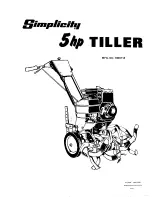
38
15.2 - general unit maintenance
•
Keep the unit itself and the space around it clean and
free of obstructions. Remove all rubbish such as packing
materials, as soon as the installation is completed.
•
Regularly clean the exposed pipework to remove all
dust and dirt. This makes detection of water leaks
easier, and they can be repaired before more serious
faults develop.
•
Confirm that all screwed and bolted connections and
joints are secure.
•
Secure connections prevent leaks and vibration from
developing.
•
Check that all foam insulation joints on the heat
exchanger piping are in good condition.
15.3 - Refrigerant charge
15.3.1 - Undercharge
If there is not enough refrigerant in the system, this is
indicated by gas bubbles in the moisture sight glass.
If the undercharge is significant, large bubbles appear in
the moisture sight glass, and the suction pressure drops.
The compressor suction superheat is also high. The machine
must be recharged after the leak has been repaired.
Find the leak and completely drain the system with a
refrigerant recovery unit. Carry out the repair, leak test
and then recharge the system.
IMPORTANT: After the leak has been repaired, the circuit
must be tested, without exceeding the maximum low-side
operating pressure shown on the unit name plate.
The refrigerant must always be recharged in the liquid phase
into the liquid line. The refrigerant cylinder must always
contain at least 10% of its initial charge. For the refrigerant
quantity per circuit, refer to the data on the unit name plate.
15.3.2 - Verification of the charge
CAUTION: The 30RW units are supplied with a precise
refrigerant charge (see Physical Data table).
To verify the correct system charge prodeed as follows:
Ensure that no bubbles appear in the sight-glass, when
ope-rating the unit at full load for a while. Use a saturated
con-densing temperature between 45 and 50°C. Under
these conditions the apparent subcooling which is equal to
the saturated condensing temperature (1 - on the saturated
dew point curve) minus the liquid refrigerant temperature
(3) ahead of the expansion device must be between 12 and
14°C. This corresponds to an actual subcooling temperature
of between 6 and 8 K at the condenser outlet, depending on
the unit type. Actual subcooling is equal the saturated
liquid temperature (2 - on the saturated bubble point curve)
minus the liquid refrigerant temperature (3) ahead of the
expansion device. Use the pressure tap supplied on the liquid
piping to charge refrigerant and to find out the pressure of
the liquid refrigerant. If the subcooling value is not correct,
i.e. lower than the specified values, a leak detection test must
be carried out on the unit, as it no longer contains its original
charge.
WARNINg: To ensure proper operation of 30RW units
there must be at least 12 K of subcooling as the liquid
refrigerant enters the expansion valve.
The 30RW units use refrigerant. For your information, we
are reproducing here some extracts from the official
publi-cation dealing with the design, installation,
operation and maintenance of air conditioning and
refrigeration systems and the training of people involved
in these activities, agreed by the air conditioning and
refrigeration industry.
Apparent and actual subcooling
Pr
essur
e
Enthalpy
legend
1
Saturated condensing temperature at the dew point
2
Saturated liquid temperature at the bubble point
3
Liquid refrigerant temperature
4
Saturation curve at the dew point
5
Saturation curbe at the bubble point
6
Isotherms
7
Apparent subcooling (1 - 3)
8
Real subcooling (2 - 3)
L
Liquid
L + V vapour
V
Vapour
15.4 - Refrigerant guidelines
Refrigeration installations must be inspected and maintained
regularly and rigorously by specialists. Their activities must
be overseen and checked by properly trained people. To
minimise discharge to the atmosphere, refrigerants and
lubricating oil must be transferred using methods which
reduce leaks and losses to a minimum.
•
Leaks must be repaired immediately.
•
If the residual pressure is too low to make the transfer
alone, a purpose-built refrigerant recovery unit must
be used.
•
Compressor lubricating oil contains refrigerant. Any
oil drained from a system during maintenance must
therefore be handled and stored accordingly.
•
Refrigerant under pressure must never be discharged
to the atmosphere.
3
4
5
1
6
2
L
L + V
V







































